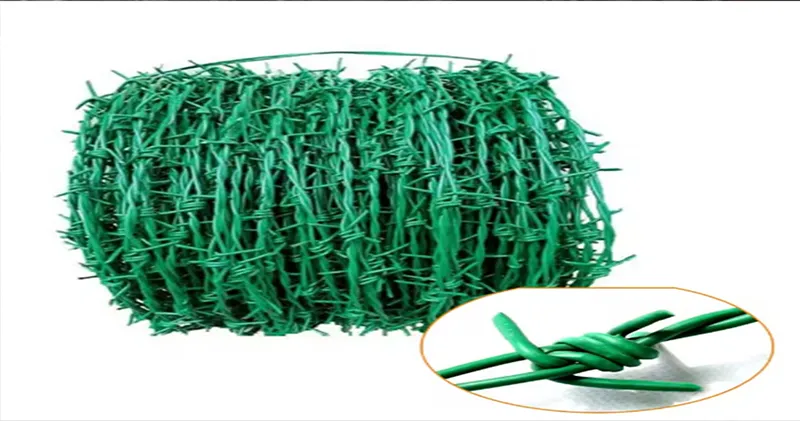-
 Phone:
Phone: -
 Email:
Email:

Exploring the Uses and Differences Between Razor Wire and Barbed Wire
The Use and Implications of Razor Wire and Barbed Wire
Razor wire and barbed wire are essential materials often employed in security and fencing applications. These two types of fencing materials serve the primary purpose of creating a formidable barrier that deters trespassers and enhances the security of sensitive areas. Although they may appear similar at first glance, their designs and specific applications differ significantly.
Understanding the Basics
Barbed wire consists of two strands of wire twisted together that is adorned with sharp-edged barbs at regular intervals. It was invented in the 19th century and quickly became popular for agricultural use, providing an effective means to confine livestock while keeping potential intruders at bay. Its cost-effectiveness and ease of installation made it a staple in rural America.
Razor wire, on the other hand, is a modern adaptation of barbed wire. It consists of a central wire strand with sharp metal blades or barbs placed at intervals along its length. This design makes razor wire more dangerous and harder to climb over, making it an ideal choice for high-security installations, including prisons, military bases, and sensitive industrial sites. Its intimidating appearance is not only a physical deterrent but also serves a psychological one, dissuading would-be trespassers before they even approach.
Applications in Security
Both razor wire and barbed wire are commonly used in various security contexts. Barbed wire is frequently found at the perimeters of farms and ranches, acting as a barrier to keep livestock in and predators out. However, it is also widely used in residential settings and some low-security commercial properties. In these cases, it helps reinforce existing fencing to prevent unauthorized entry.
Razor wire, however, is typically reserved for high-risk environments. It is often installed on top of fences surrounding correctional facilities, military installations, and critical infrastructure locations such as power plants and water treatment facilities. Its design makes it particularly effective in preventing climbing or cutting, as the sharp edges can cause serious injury to anyone attempting to breach it.
razor wire and barbed wire

Legal and Ethical Considerations
While both types of wire fencing serve the purpose of securing property, their use raises several legal and ethical considerations. For instance, the installation of razor wire can lead to serious injuries or fatalities if individuals come into contact with it. This poses questions regarding liability and the responsibilities of property owners to provide safe environments.
In some regions, strict regulations govern the use of razor wire, particularly in residential areas where safety is a paramount concern. Local laws may stipulate the types of fencing permissible around homes, often aiming to balance security with the well-being of the surrounding community. Therefore, property owners must navigate these regulations carefully to avoid potential legal repercussions.
Future Innovations
As security needs continue to evolve, so too do the materials and technologies employed in fencing solutions. There is ongoing research into making razor wire safer while maintaining its efficacy as a deterrent. Innovations in materials may lead to alternatives that are less likely to cause injury while still providing a robust security solution.
Additionally, advancements in technology, such as the integration of motion sensors and cameras, can enhance traditional fencing systems. By combining physical deterrents like razor and barbed wire with electronic surveillance, property owners can create a multi-layered approach to security that better protects their assets.
Conclusion
Razor and barbed wire play crucial roles in our security landscape, offering cost-effective solutions for a variety of applications. Whether used to secure agricultural lands or high-priority installations, their presence highlights the ongoing need for effective barriers against unauthorized access. However, as we continue to prioritize safety and security, it is essential to consider the implications of such materials and strive for solutions that protect both property and the individuals in the vicinity. The future of fencing and security will likely intertwine technology with traditional methods like razor and barbed wire, ultimately creating a safer environment for all.
-
Wire Mesh for Every Need: A Practical SolutionNewsJul.25,2025
-
Steel Fences: Durable, Secure, and Stylish OptionsNewsJul.25,2025
-
Roll Top Fencing: A Smart Solution for Safety and SecurityNewsJul.25,2025
-
Cattle Farm Fencing Solutions for Maximum SecurityNewsJul.25,2025
-
Affordable Iron Binding Wire SolutionsNewsJul.25,2025
-
Affordable Galvanized Wire SolutionsNewsJul.25,2025
-
Wire Hanger Recycling IdeasNewsJul.25,2025








